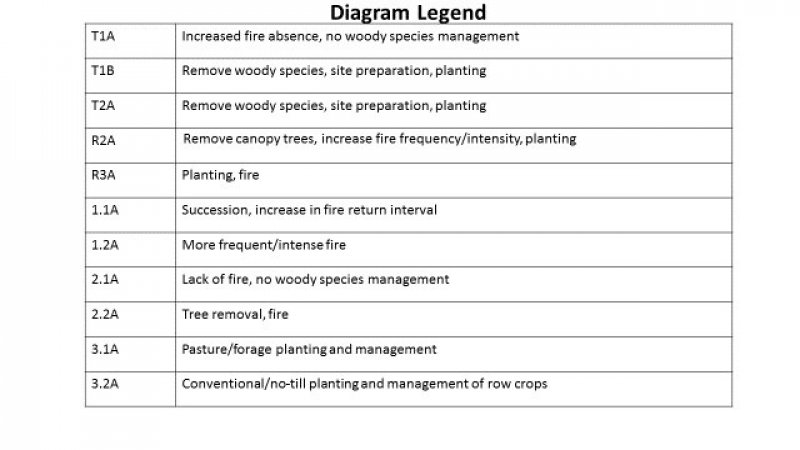
Natural Resources
Conservation Service
Ecological site R111XB402IN
Dry Outwash Integrade
Last updated: 9/11/2024
Accessed: 12/22/2024
General information
Provisional. A provisional ecological site description has undergone quality control and quality assurance review. It contains a working state and transition model and enough information to identify the ecological site.
MLRA notes
Major Land Resource Area (MLRA): 111X–Indiana and Ohio Till Plain
111B – Indiana and Ohio Till Plain, Northeastern Part. This area is in the Eastern Lake and Till Plains Sections of the Central Lowland Province of the Interior Plains. The entire MLRA is glaciated, and most areas are dominated by ground moraines that are broken in places by lake plains, outwash plains, flood plains, and many recessional moraines. The ground moraines and lake plains in front of the recessional moraines are flat to undulating. In many places stream valleys occur at the leading edge of the recessional moraines. Narrow, shallow valleys commonly are along the major rivers and streams in this MLRA, and some areas along the major rivers and streams have deposits of sand. Elevation ranges from 630 to 1,550 feet (190 to 470 meters), increasing gradually from west to east. Relief is mainly a few meters, but in some areas hills rise as much as 100 feet (30 meters) above the adjoining plains.
The extent of the major Hydrologic Unit Areas (identified by four-digit numbers) that make up this MLRA is as follows: Western Lake Erie (0410), 41 percent; Wabash (0512), 28 percent; Scioto (0, 28 percent; Scioto (0506), 10 percent; St. Clair-Detroit (0409), 9 percent; Great Miami (0508), 6 percent; Southeastern Lake Michigan (0405), 5 percent; and Southwestern Lake Huron (0408), 1 percent. The Huron River in Michigan, Cedar Creek in Indiana, and the Sandusky River in Ohio have been designated as National Wild and Scenic Rivers in this MLRA.
The surficial materials in this area include glacial deposits of till, outwash, and lacustrine sediments from Wisconsin and older glacial periods. A thin mantle of loess occurs in some areas. Most of the MLRA is underlain by Silurian and Devonian limestone and dolostone. Middle Devonian to Early Mississippian black shale and Early to Middle Mississippian siltstone and shale are in some areas of the northern part of the MLRA
Classification relationships
Major Land Resource Area (USDA-Natural Resources Conservation Service, 2006)
USFS Ecological Regions (USDA, 2007):
Sections –Central Till Plains, Beech Maple (222H), South Central Great Lakes (222J)
Subsections – Bluffton Till Plains (222Ha), Bluffton-Ann Arbor Till Plains (222Je), Jackson Interlobate Moraine (222Jg), Steuben Interlobate Moraines (222Ji)
NatureServe Systems anticipated (NatureServe, 2011): Agriculture - Cultivated Crops and Irrigated Agriculture, Agriculture – Pasture/Hay, North-Central Interior Dry-Mesic Oak Forest and Woodland
LANDFIRE Biophysical Settings anticipated (USGS, 2010): North-Central Interior Dry-Mesic Oak Forest and Woodland
Ecological site concept
This site is an upland site formed on glacial outwash parent materials on outwash plains and terraces. The soil surface color is relatively dark (3/2 Munsell or darker) and loamy in texture. The soils are somewhat poorly drained or drier and are, taxonomically, in the aquic suborder.
The characteristic vegetation of this site is of an oak savanna. The dominant grass species are big bluestem and little bluestem, with the dominant tree species being mostly white oak with bur oak being common as well. Other species common on the site included side oats grama, needlegrass, and numerous aster and blazingstar species. Fire frequency and, to a lesser extent, intensity, was the primary disturbance mechanism that led to the site being co-dominated by grass and oak species historically. The accumulation of dried plant material allowed this site to carry fire well once ignited, whether that be by lightning strikes or fires set by Native Americans. Low intensity fires occurred every 5 years or less on this site, with some sites having nearly annual fires. This disturbance regime, along with wind throw and drought maintained the co-dominance of tree and herbaceous species on the site. Grazing by ungulates had an effect on the production and species diversity of this site, but the magnitude of the impact was less than that for savannas and prairies farther west. Reduction or in most cases elimination of fire as converted most of the site that is still in natural vegetation to that of a woodland or forest dominated primarily by oak and hickory species within a few decades. The understory, in this phase, is originally dominated by prairie species. The closure of the canopy shifts this dominance to more mesic, woody species. The understory becomes susceptible to invasion by non-native, invasive species, particularly Asian bush honeysuckle. Since settlement, most of the site is being used for agriculture, primarily corn and soybean rotations.
Associated sites
| R111XB401IN |
Wet Outwash Mollisol Wet outwash mollisol. Soils are in the aquic taxonomic suborder and are very poorly to poorly drained. |
|---|---|
| F111XB403IN |
Outwash Upland Outwash Upland. Soil surface is light in color (lighter than 3/2 Munsell) and are very poorly to SWPD. |
| F111XB404IN |
Dry Outwash Upland Dry Outwash Upland. Soil surface is light in color (lighter than 3/2 Munsell) and are moderately well drained or drier. |
Similar sites
| R111XB401IN |
Wet Outwash Mollisol Wet Outwash Mollisol |
|---|---|
| R111XB301IN |
Dark Bedrock Prairie Dark Bedrock Prairie |
Table 1. Dominant plant species
| Tree |
(1) Quercus alba |
|---|---|
| Shrub |
Not specified |
| Herbaceous |
(1) Schizachyrium scoparium |
Click on box and path labels to scroll to the respective text.



